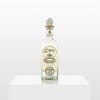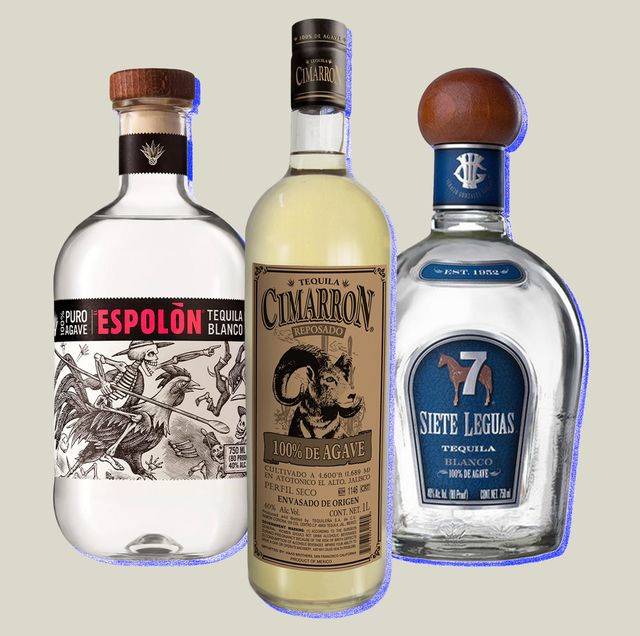




This definitive guide to the best tequilas you can buy explores everything you need to know about the world’s most popular agave spirit, including a list of the best bottles and brands to seek out.

There is perhaps no spirit as villainized or misused as tequila. In America, it’s all about getting trashed; glugging with cheap margarita mix; doing shots that are so unpalatable you need to assault your own tongue with salt and acidic lime; toeing the line between lit up and throwing up. At least absinthe gets to be the bad boy.
Incredibly, that’s just the tip of the iceberg for tequila’s problems. Seven out of every ten bottles are exported out of Mexico, and 80 percent of those end up in the States. Our drinking culture, with its collegiate attitude toward the spirit, has reflected back on the way the spirit is now made, and its place in Mexican culture.
“Americans did fundamentally change the industry in Mexico,” says Chantal Martineau, a spirits writer and the author of How the Gringos Stole Tequila: The Modern Age of Mexico’s Most Traditional Spirit. “By the time official laws defined tequila in the 1970s” — it must be made using at least 51 percent blue weber agave, and only in five regions of Mexico — “the spirit had already gained popularity in the U.S., to the point where producers in Mexico were having trouble keeping up with demand. They had to change how they made the spirit, which modernized and mechanized it,” Martineau says.
And so the bar for tequila (which is actually part of the mezcal family) was lowered. We became consumers, largely, of what’s known as mixto — tequila made using only 51 percent agave and 49 percent non-agave sugars, usually cane sugars. If we broke tequila, however, we can also fix it. Made with 100 percent agave, our picks are affordable, expensive, subtle, aromatic and everything in between.
Tequila is a type of distilled alcoholic spirit — like whiskey, rum and vodka — that is made from the cooked and fermented juice of the blue agave plant, a succulent native to Mexico. Like certain other spirits, such as bourbon and Scotch, there are laws dictating what can be qualified as tequila. The Mexican government stipulates that tequila must be produced in one of five Mexican states: Guanajuanto, Michoacan, Nayarit, Jalisco and Tamaulipas, with the vast majority originating in Jalisco, home to the town of Tequila. This is known as the Denomination of Origin Tequila, and it’s observed by over 40 countries, including the US.
The Mexican government also stipulates that the spirit be made from at least 51 percent blue agave (similar to bourbon’s 51% corn requirement) and be aged for at least two weeks. The US Government adds a minimum ABV requirement of 40 percent for tequila sold in the country, which is identical to bourbon’s minimum ABV. In Mexico, the spirit can be sold at ABVs between 33 and 55 percent.
Of all tequilas, blancos offer the purest expression of agave, Martineau says. They are “unaged,” though sometimes kept in a vat for several months to settle. “A really good blanco should have, above all, a very rich nose and body of cooked agave,” she says. “Besides that, there are so many different flavor profiles. Some are really green and herbaceous. Some have chocolate notes. Pineapple in some, jalapeño in some. The best ones have really interesting finishes, too, like pepper or mint. You see why in Mexico they drink tequila with food.”
Reposado refers to tequila that’s been aged between two and twelve months in oak barrels. “The amount of time makes a huge difference,” Martineau says, and you can expect different flavor profiles to follow. It’s also worth noting the color of the spirit. “I always raise an eyebrow when I see [a reposado] that’s really, really dark,” she says. “It suggests to me that maybe color was added. I don’t mind seeing a light aged spirit because 11 months is not that long to spend in a barrel.” A good reposado should maintain the agave-forward flavor of a blanco but it’s going to show some barrel: sweetness, vanilla, spice. According to Martineau, however, the best examples are not overwhelmingly influenced by the barrel. “Reposado means rested, not aged,” she says.
Añejos are tequilas that have spent anywhere from one to three years in barrels. After three years, the spirit becomes an extra añejo, which is a rather new category, Martineau says. “Maybe I’m biased here, but I think [some] añejos shouldn’t be. A lot of distillers come out with one to complete their line but aging a spirit is a whole other ballgame, and not every spirit maker knows how to do it.”
Still, there are good añejos out there. They’ll have more color than a reposado, though Martineau warns that very dark ones could be doctored with additives. “I think of [añejos] as something you reach for with dessert,” she says. “You still want that cooked agave, almost pumpkin flavor. But on top of that, you’ll find other flavors, too.” For example, the chocolate notes found in some blancos become sweeter, like milk chocolate, after aging.
Aging influences the weight and texture of a tequila, too. “Once it’s been left in a barrel for this long, you should expect it to have an almost syrupy quality to it,” Martineau says.
Tequila and mezcal are in sort of a square and rectangle situation. As in, all tequila is mezcal, but not all mezcal is tequila. By its broadest definition, mezcal is simply a Mexican spirit distilled from any type of agave – not just the Blue Weber agave that must be used in tequila — so the rules governing its production are looser than those of tequila. So why is it then that mezcals often taste so different than tequilas, with their famous smoky notes? It mostly comes down to tradition. In Jalisco, where most tequila is produced, the traditional method for cooking agave prior to fermentation is by steaming it. Mezcal, by contrast, is mainly produced in Oaxaca, where the preferred cooking method is to roast agave in a fire pit, hence the added smokiness.